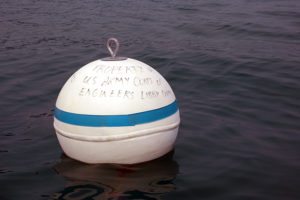Home »

Selenium pollution has US attention
Selenium pollution crossing the border at Lake Koocanusa was on the agenda for a high-level meeting between the US and Canada in Washington, D.C. April 26.
Violation of the long-standing US-Canada Boundary Waters Treaty, which prohibits polluting waterways shared by the two countries, was on the table at the meeting between the US Department of State and Global Affairs Canada. Resolving the cross-border pollution issue is also included as a priority in the recent federal budget bill signed by President Donald Trump.

Rising pollution levels from Teck’s Elk Valley coal mines are putting fish in danger in Koocanusa — and in the Elk and Fording Rivers. Montanans, frustrated with a lack of effective action, have taken the issue to the federal level, a Wildsight press release stated.
“If Montana can’t tolerate selenium pollution levels in Koocanusa, why are we willing to put up with the much higher selenium levels upstream in the Elk and Fording Rivers here in B.C.?” asked Wildsight’s Lars Sander-Green.
Selenium, which leaches from waste rock dumps at Teck’s five Elk Valley coal mines, can cause birth defects or complete failure to hatch in trout when the pollutant builds up in their organs.
“After Teck admitted last year that they can’t meet their commitments under the Elk Valley Water Quality Plan,” Sander-Green said, “everyone is looking to the provincial government to see what they’ll do. So far, it looks like they’ll just let Teck shift the goalposts, loosening selenium pollution limits over the next few years.”
Teck’s one water treatment plant in the Elk Valley, which is the first of many to be built, is currently shut down for upgrades after it was discovered that the plant was actually making the selenium pollution problem downstream worse.
“It’s hard to believe that a couple decades after the selenium pollution problem at the Elk Valley coal mines was discovered, selenium pollution levels are still rising,” said Sander-Green, “but if B.C. won’t enforce their own regulations, who’s going to defend our clean water?”
Elk Valley Coal News reported April 29 that Michael Jamison, program manager with the National Park Conservation Association’s Glacier Field Office in Montana, said it’s a good sign the pollution of the transboundary watershed was on the April 26 bilateral agenda.
“People have been discussing the transboundary water issue between B.C. and Montana as a potential agenda item for the bilaterals for over a decade,” Jamison told DeSmog Canada. “They’re finally there.”
Montana Senator Jon Tester has been raising the profile of the issue for years, saying the Kootenai watershed, which is a popular spot for recreational fishing and outdoor activity, is threatened by B.C.’s pollution, Elk Valley Coal News reported.
Tester pushed for the Kootenai River to be included in the recent U.S. government-spending bill, signed by President Trump, which lists reducing the pollution flowing into the watershed as a budget priority.
“It seems like there’s some traction here that we’ve been missing for some time,” Jamison said.
“But this is what baffles me — it’s bad enough that us in Montana, the U.S. State Department and tribes on this side of the border are prioritizing it. But it must be so much worse farther north. I guess I don’t understand how B.C. puts up with that.”
Dr. Dennis Lemly, a research associate professor at Wake Forest University in North Carolina, wrote in a report: “As these surface mines have expanded, so has the volume of their selenium-laden water discharges to nearby stream and rivers.”
Lemly warns the Elk River watershed is at a tipping point and further increases in selenium concentrations could lead to a “total population collapse of sensitive species such as westslope cutthroat trout.”
Contacted by e-KNOW to comment on the issue, Teck maintains it is doing all it can to bring the selenium problem to a conclusion.
Teck has worked in cooperation with governments in Canada and the U.S., as well as Indigenous groups, communities, independent scientific experts and others to develop and implement the Elk Valley Water Quality Plan, said Nic Milligan, Teck Coal Limited’s Manager of Social Responsibility.
“The plan is a comprehensive, long-term approach to address the management of selenium and other substances related to mining activities in the Elk Valley watershed. Teck is dedicating significant resources to implementing the Elk Valley Water Quality Plan, including an expected capital investment of $850-900 million over the next five years towards construction of water treatment facilities – the second of which will begin construction later this spring,” Milligan said.
“In addition, we are conducting extensive studies and monitoring of water quality and aquatic health while also undertaking a multi-year research and development (R&D) program to determine how we can better protect water quality. Teck is committed to continuing to work cooperatively with stakeholders in both the U.S. and Canada to address this challenge and ensure the health of the watershed is maintained for generations to come,” he said.
More information is available at www.teck.com/elkvalley.
Lead image credit Garth Lenz
– Ian Cobb/e-KNOW







